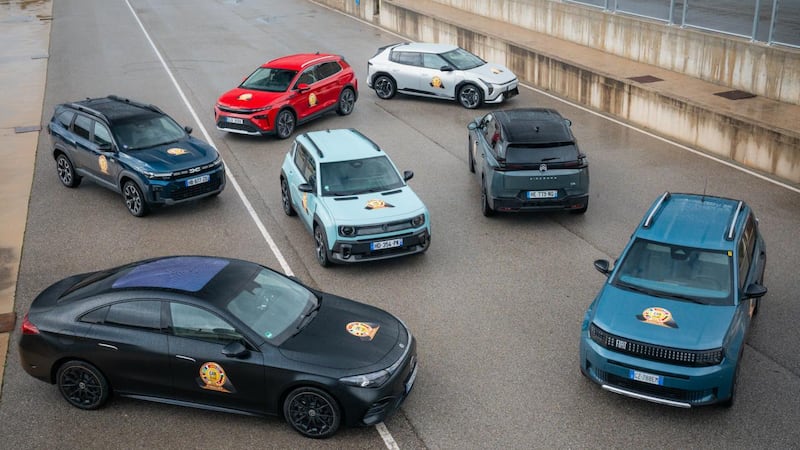Seven years after it killed off the Almera, Nissan is returning to the popular hatchback market with a new model, the Pulsar.
The new car will bring it back into the conventional c-segment hatchback market, dominated by cars such as the Volkswagen Golf and Ford Focus, for the first time since the unloved Almera was killed off back in 2007.
When the old Almera was given the chop, it was never fully replaced. Instead, Nissan decided that its image in the five-door hatch market was so poor that it needed a fresh start – and the original Qashqai was it. It is the runaway success of the Qashqai, and the increased size and sophistication of the recently-launched second generation Qashqai, that has given Nissan the confidence to try once again to take on the Golf and Focus.
Pulsar is of course a name from Nissan’s past, but the company will be hoping that few today will remember it being stuck to the back of a succession of underwhelming Sunnys and Almeras way back when.
The new Pulsar is a very conventional-looking five-door hatchback, which takes the current corporate face of Nissan (as expressed on the Qashqai and the new X-Trail).
Underneath lies much of the mechanical package from the current Qashqai, and that means a simple torsion bar rear suspension package with a more sophisitcated multi-link version available on higher performance models, just as you'll find in the current Golf and Seat Leon.
Higher performance in a hatchback Nissan? Oh yes, there will be a NISMO (NISsan MOtorsport) version to compete with the Golf GTI, but Nissan officials are saying that it wants to take on the Golf Bluemotion too. So far, no official figures are available, but Nissan has confirmed that the Pulsar will use the 115bhp 1.2-litre turbocharged petrol engine (as found in the Note and Qashqai) and the long-serving 110bhp 1.5-litre dCi diesel. That engine currently scores a 90g/km CO2 rating in the Qashqai, but all Nissan will admit for now is that the Pulsar will feature emissions "below 95g/km". That should mean that a diesel Pulsar will match or beat the Golf Bluemotion and Peugeot 308 BlueHDI's 82-85g/km ratings.
Although not immediately available at launch, Nissan will also offer a turbocharged 190bhp 1.6-litre petrol engine (related to the unit currently found in the Juke NISMO) which will also likely form the basis of any high-performance variant. It also seems likely that the more powerful 1.6-litre dCi diesel engine will also make an appearance at some stage as a foil to VW’s 2.0-litre HDI and PSA Peugeot Citroën’s 2.0-litre HDI units. Power will be transmitted through six-speed manual gearboxes or an optional X-Tronic CVT (Continuously Variable Transmission). Nissan hasn’t yet said whether the car will get a dual-clutch DSG-style gearbox but there is one in the Renault-Nissan parts bin if the X-Tronic fails to find favour with customers.
As well as mechanical parity, Nissan also wants to make sure that the Pulsar hits the practical requirements of family buyers. According to Nissan, the Pulsar’s 2.7-metre wheelbase is the longest in the class, and it claims that the 692mm of rear legroom makes the car as spacious as some vehicles from the class above.
The Pulsar will also offer a full suite of electronic aids and in-car connectivity. Nissan's Safety Shield – which uses cameras, radars and parking sensors to combine Forward Emergency Braking, Moving Object Detection, Lane Departure Warning and Blind Spot Warning – will be available. There will also be a second-generation version of Nissan's NissanConnect system which will plumb your smartphone into the car's systems and offers such add-ons as Google Send-To-Car which allows you to communicate with the vehicle when it's parked up.
The release of the Pulsar is something of a gamble for Nissan, which previously left the c-segment under something of a cloud. Nissan’s recent success has been built upon niche models and crossovers such as the Qashqai and X-Trail, while more conventional cars such as the Micra have been somewhat frozen out.
Will buyers embrace a more conventional Nissan family car after such a long time away from this corner of the market? With production at Nissan’s Barcelona plant starting shortly and sales commencing in the autumn, it won’t be long before we find out.















